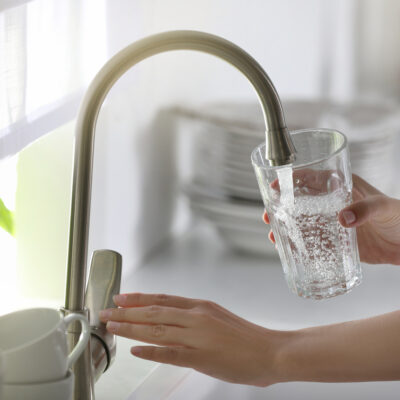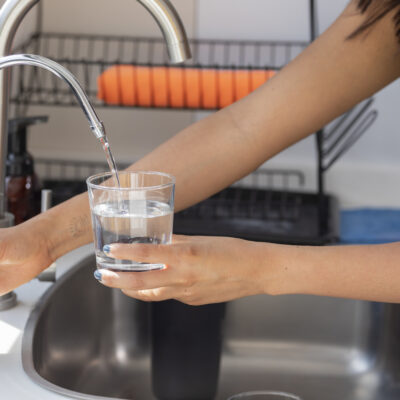City of Ventura Water Quality Report
Population Served: 109,831
Recent Violations: None
Primary Water Source(s): Ventura River, Casitas, and Groundwater Basins
Report Year: 2025
Source: City of Ventura
DID YOU KNOW water quality reports, also known as “Consumer Confidence Reports (CCRs),” are annual documents that all public water systems are required to provide to you via mail and online. These reports are supposed to provide important information about the quality of the drinking water delivered over the previous year.
They can be difficult to read or understand. They are often many pages long and contain complex tables and charts. Culligan Water wants to change this and help you MAKE SENSE OF YOUR WATER.
This easy-to-read report will provide you with the following:
- Violations: Any federal, state, or local violations your water system has committed recently.
- Items of interest: Common water issues discussed within your community.
- Potential concerns: Unregulated contaminants that could be a health concern to you or your family.
- Water hardness: The current level of hard water in your area.
The Water Quality Report Legend:
- Health Concern Contaminants that have known health effects that the EPA regulates to protect public health.
- Aesthetic Issue Not necessarily a health risk but can affect your water’s appearance, taste, or odor.
- Unregulated Possible health risk but NO standards set by the EPA. Emerging chemicals and compounds the EPA is gathering data on.
Maximum Contaminant Level (MCL): The highest level of a contaminant that is allowed in drinking water.
Action Level (AL): The concentration of a contaminant that triggers additional action.
Max. Contaminant Level Goal (MCLG): The level of a contaminant in drinking water that doesn’t pose a significant risk to health. MCLG are NOT regulatory standards, and may not be attainable due to current remediation technologies.
A Summary Of The Ventura Water Quality Report
1) Infrastructure Improvements:
Ventura Water continues to make significant investments in water infrastructure, including upgrades to pipelines, storage tanks, and treatment facilities. The city operates a complex system of more than 390 miles of pipeline with a 52-million-gallon storage capacity. Routine system flushing is performed to maintain water quality and remove buildup—now more efficiently managed with the NO-DES (Neutral Output Discharge Elimination System) unit, which recirculates water during flushing to reduce waste. Ventura also maintains a fully accredited laboratory and staff dedicated to round-the-clock water quality testing and regulatory compliance.
2) Water Sources and Usage:
Ventura’s water is sourced from local watersheds, reservoirs, and interconnections with regional suppliers. Key projects include the State Water Interconnection Project (in partnership with Calleguas Municipal Water District) to improve water delivery flexibility and reliability, and the VenturaWaterPure program, which will add purified recycled water to the supply through advanced treatment technologies. These efforts aim to enhance sustainability and drought resilience while maintaining safe drinking water for the community.
3) Emerging Contaminant Monitoring (PFAS and Others):
Ventura’s laboratory is certified in nine fields of testing and continuously monitors for hundreds of chemical compounds, including PFAS and other emerging contaminants. While PFAS are not currently regulated at a federal level, Ventura Water closely follows state and national guidance and is prepared to take action if new standards are introduced. Their proactive testing ensures Ventura’s water continues to meet or exceed public health and safety benchmarks.
4) Source Water Vulnerabilities and Public Health:
Ventura’s most vulnerable source areas are near gas stations, auto repair shops, metal manufacturers, and sewer collection systems, according to a 2013 Source Water Assessment. However, no contaminants linked to these activities have been detected. The city also acknowledges the presence of naturally occurring substances and potential contaminants such as pesticides, herbicides, inorganic compounds, and organic chemicals. Educational resources are provided to help residents reduce exposure, particularly in households with young children or immunocompromised individuals.
Forever Chemicals
PFAS Contaminants In Ventura Tap Water
PFAS (per- and polyfluoroalkyl substances), also known as “forever chemicals,” are an emerging concern across the United States—including Ventura. These man-made chemicals are persistent in the environment and linked to health risks. In April 2024, the U.S. government introduced its first-ever legally enforceable national drinking water standard for six PFAS compounds, requiring water systems nationwide to meet stricter limits.
The 2025 Ventura water quality report shows that there has only been one discovery of PFBS in their water, though it’s below the minimum reporting level.
In California, the State Water Resources Control Board has taken a proactive approach. The state has established its own Notification and Response Levels for PFOA and PFOS and is in the process of developing enforceable Maximum Contaminant Levels (MCLs) for these substances by 2025. Ventura Water is already monitoring PFAS and participating in state-mandated testing programs to stay ahead of new regulations. These actions aim to ensure public health protection as scientific understanding and federal guidance evolve.
PFOS
Minimum Reporting Level: 1 ppt
Concerns: Cancer
Removal: Reverse Osmosis Water Filters, Whole House Water Filters
PFPeA
Minimum Reporting Level: N/A
Concerns: Cancer
Removal: Reverse Osmosis Water Filters, Whole House Water Filters
PFBS
Minimum Reporting Level: 0.5 ppb
Concerns: Cancer
Removal: Reverse Osmosis Water Filters, Whole House Water Filters
PFHxA
Minimum Reporting Level: N/A
Concerns: Cancer
Removal: Reverse Osmosis Water Filters, Whole House Water Filters
Hard Water
Hard Water Problems in Ventura
In 2025, the Ventura water quality report reported an average water hardness of 450 mg/L or 26 grains per gallon, officially classifying Ventura’s water as very hard. According to the U.S. Geological Survey, anything above 180 mg/L is considered “very hard,” putting Ventura’s water far beyond typical hardness levels. This level of mineral content can lead to scale buildup in pipes, reduced appliance efficiency, and dry skin and hair, making water softeners not just helpful — but essential for many homes in the area.
Hard Water
Public Health Goal: 402-911
Concerns: Dry skin/hair, scale, soap scum, mineral buildup in appliances
Removal: Water Softeners, Whole House Water Filters
Radioactive Contaminants
Explore Radioactive Contaminants Of Concern In Ventura
Radioactive contaminants can include substances like radium, uranium, and radon. These contaminants can enter water sources through natural deposits or as a result of human activities like mining.
Gross Alpha
EPA Max. Contaminant Level: 15
Max. Contaminant Level Goal: 0
Concerns: Cancer, Environmental Issues
Removal: Reverse Osmosis Water Filters, Whole House Water Filters
Uranium
EPA Max. Contaminant Level: 30
Max. Contaminant Level Goal: 0
Concerns: Cancer, Environmental Issues
Removal: Reverse Osmosis Water Filters, Whole House Water Filters
Water Contaminants
Explore Common Contaminants In Ventura Tap Water
Common contaminants can come from natural sources, industrial discharges, agricultural runoff, or corrosion of plumbing systems.
TDS
EPA Max. Contaminant Level: 500 mg/L
Concerns: Aesthetic issues such as bad odor or taste
Removal: Reverse Osmosis Water Filters, Whole House Water Filters
Sodium
EPA Max Contaminant Level: 160
Concerns: Hypertension, kidney function and heart health problems
Removal: Reverse Osmosis Water Filters, Whole House Water Filters
Fluoride
Max. Contaminant Level Goal: 4
Concerns: Dental issues
Removal: Reverse Osmosis Water Filters, Whole House Water Filters
Disinfection Byproducts
Explore Disinfection Byproduct Contaminants In Ventura Tap Water
Disinfection byproducts (DBPs) are formed when disinfectants like chlorine react with natural organic matter in the water. Common DBPs include trihalomethanes (THMs) and haloacetic acids (HAAs). One thing to note is that while some states have public health goals around all of these contaminants, Florida does not. Therefore, there is no state-mandated goal for contaminants such as HAA5 or TTHM.
Chloramine
EPA Max. Contaminant Level: 4
MCLG: 4
Concerns: Cancer
Removal: Water Softeners, Whole House Water Filters
HAA5
EPA Max. Contaminant Level: 60
MCLG: N/A
Concerns: Cancer
Removal: Water Softeners, Whole House Water Filters
TTHM
EPA Max. Contaminant Level: 80
MCLG: N/A
Concerns: Cancer
Removal: Water Softeners, Whole House Water Filters
For reference, a part per trillion (ppt) is roughly equivalent to a single drop of water in 20 Olympic-sized swimming pools or one second in 32,000 years. These updated interim Health Advisory Levels are below the detection capabilities of current laboratory testing technology. They serve as interim guidance until formal regulations or Maximum Contaminant Levels are established.




Facebook